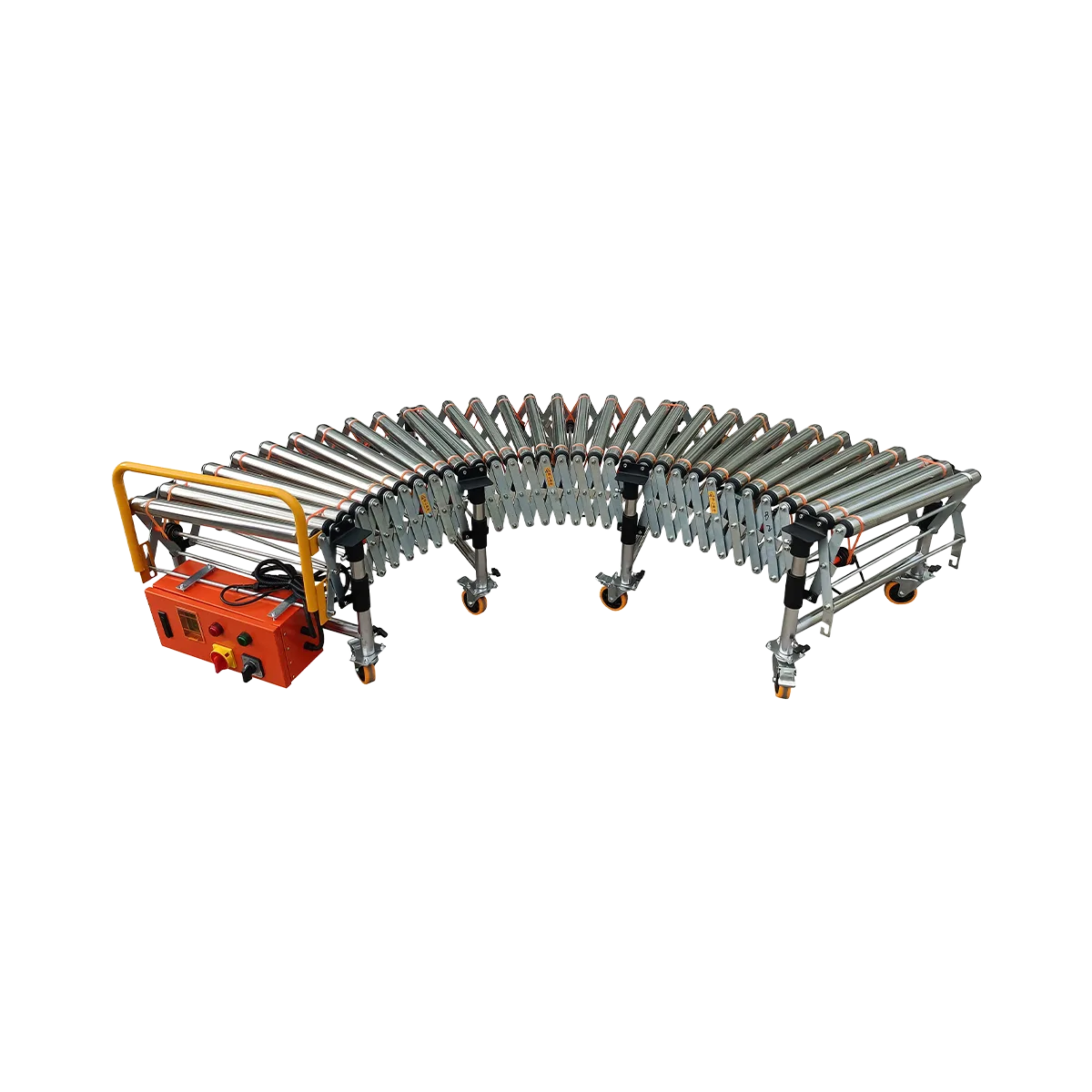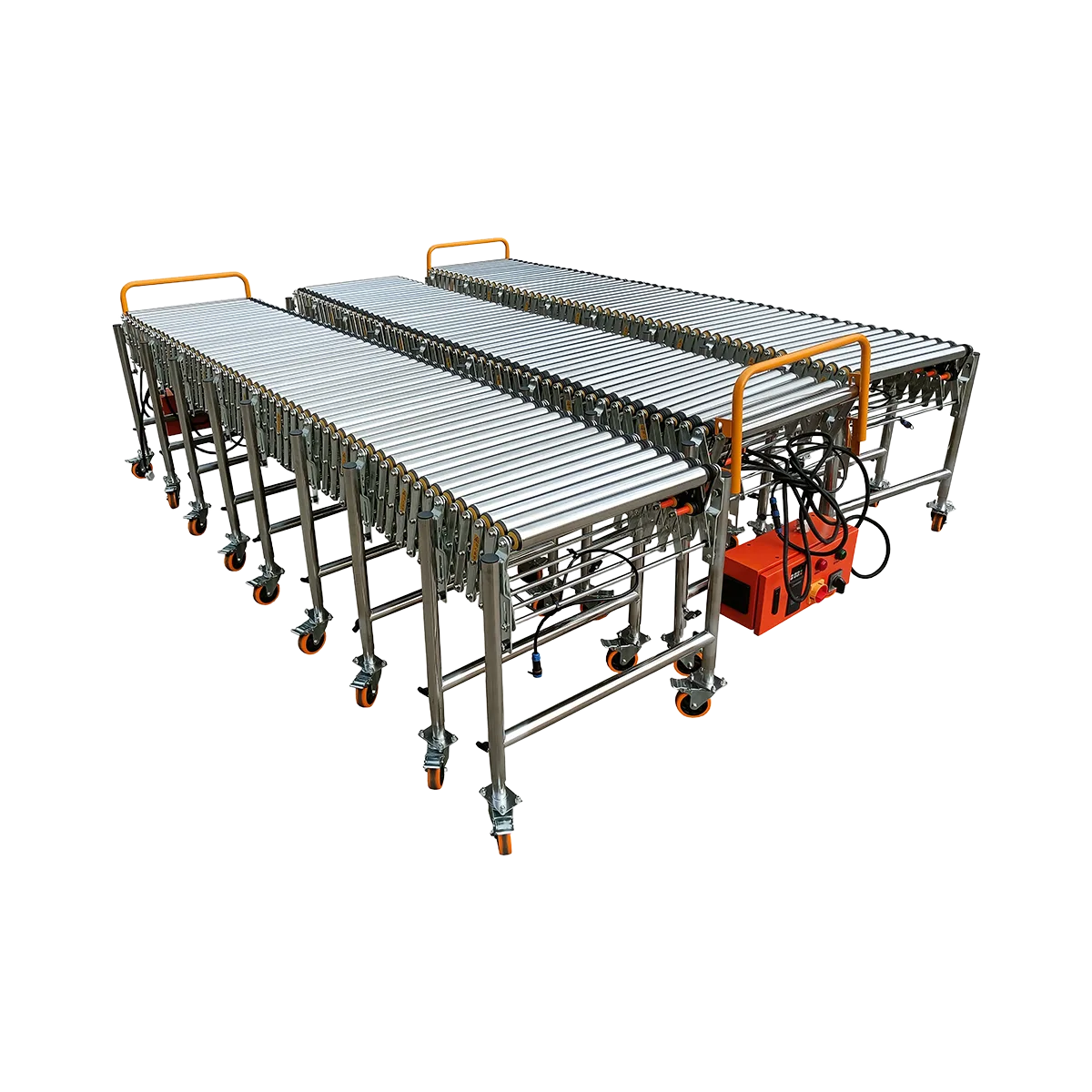A Deep Dive into Powered Roller Conveyors: O-Belt vs. Multi-Wedge Belt
Compare O-Belt vs. Multi-Wedge Belt powered roller conveyors to find the perfect motorized conveyor system for your warehouse. Discover key differences in load capacity, maintenance, and cost.
Related Products
- Powered Roller Conveyor – O-shaped Belt Driven – 1500 mm/SectionCollapsed Length
525 mm
Extended Length1500 mm
Load Capacity80 kg/m
Applicable GoodsFlat-bottomed Goods
- Powered Roller Conveyor – Multi-wedge Belt Driven – 2000 mm/SectionCollapsed Length
700 mm
Extended Length2000 mm
Load Capacity100 kg/m
Applicable GoodsFlat-bottomed Goods
- Powered Roller Conveyor – Multi-wedge Belt Driven – 3000 mm/SectionCollapsed Length
1050 mm
Extended Length3000 mm
Load Capacity80 kg/m
Applicable GoodsFlat-bottomed Goods
Powered roller conveyors have emerged as essential infrastructure in today’s fast-paced logistics environments. These versatile, motorized systems provide controlled, consistent movement of goods without manual intervention, transforming how warehouses handle everything from lightweight packages to substantial cartons. Unlike their gravity-powered counterparts, these electrically driven systems deliver reliable performance regardless of package weight or environmental conditions.
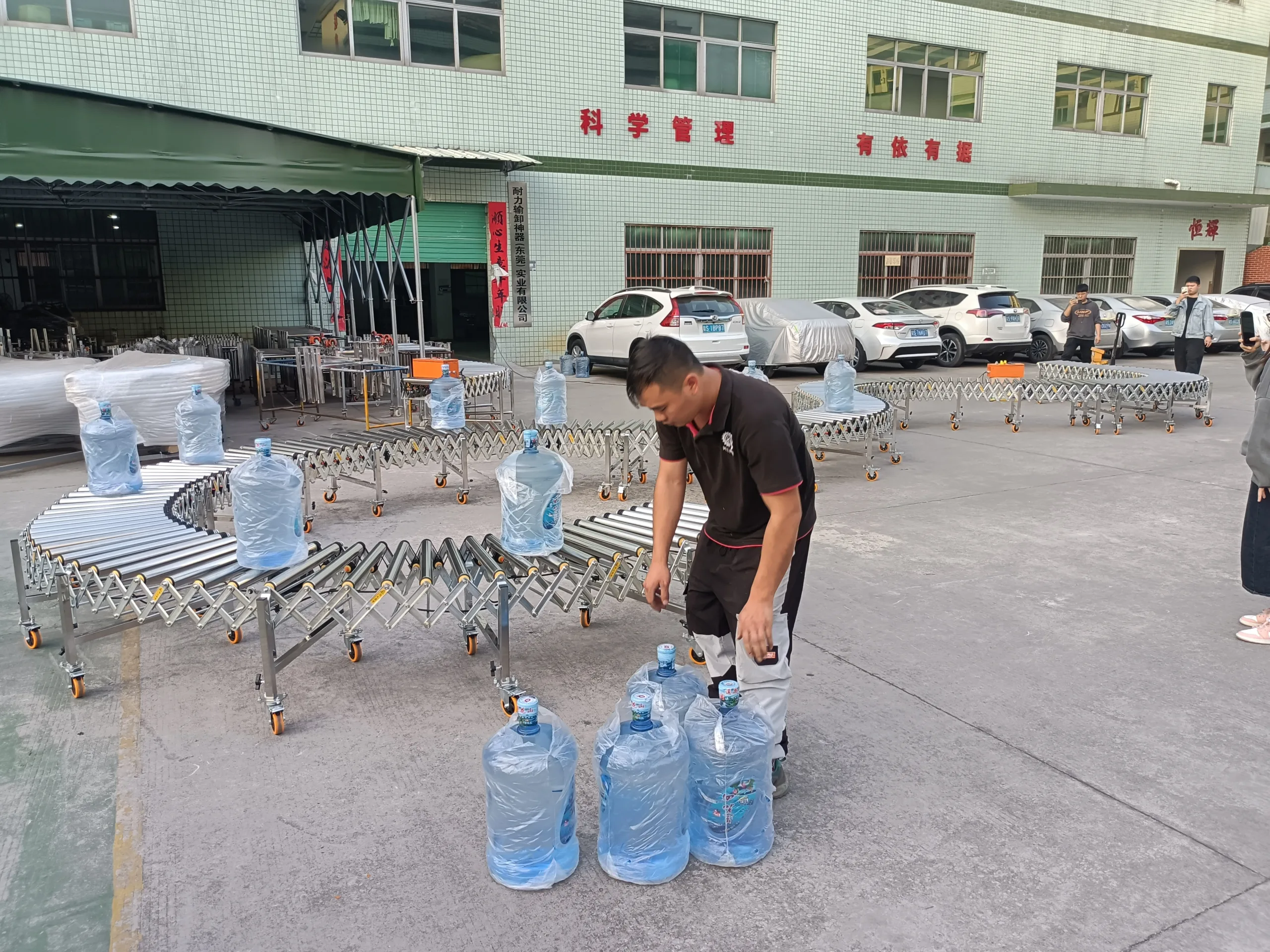

At the heart of these systems lies the drive mechanism—typically either an O-Belt or Multi-Wedge Belt (Poly-V) design—each offering distinct advantages for different operational needs. For warehouse managers looking to optimize their material handling infrastructure, understanding these differences is crucial to selecting equipment that delivers the perfect balance of performance, reliability, and cost-effectiveness.
Why Choose a Powered Roller Conveyor?
In modern logistics operations, powered roller conveyors offer several significant advantages over manual or gravity-driven alternatives:
Control and Precision
Unlike gravity systems that rely on slopes and momentum, powered conveyor systems provide precise control over product movement:
- Adjustable speeds up to 40 m/min via frequency inverter
- Consistent movement regardless of package weight variations
- Bidirectional operation capability
- Ability to start and stop flow as needed
- Even, controlled product spacing
This control is particularly valuable in operations where timing and product spacing affect downstream processes or where precise positioning is required.
Operational Consistency
Powered roller conveyor systems deliver remarkable consistency that transforms warehouse operations:
- Uniform conveying speed regardless of package weight or friction
- Consistent throughput rates for planning and scheduling
- Reliable operation in various environmental conditions
- Steady product flow without manual intervention
- Predictable performance metrics for operational planning
This consistency allows for better workflow planning, staffing optimization, and integration with other systems within your operation.
Efficiency and Throughput
The efficiency gains from implementing powered roller systems can be substantial:
- Significantly higher throughput than manual methods
- Continuous operation without fatigue factors
- Reduced labor requirements for horizontal transport
- Faster movement of goods between process areas
- Ability to handle heavier loads than manual methods
For operations processing hundreds or thousands of packages daily, these efficiency improvements quickly translate to measurable ROI and competitive advantage.
The Drive Systems: Understanding the Difference
The heart of any powered roller conveyor is its drive system. Naili offers two distinct drive technologies: O-Belt and Multi-Wedge Belt (Poly-V). Understanding the differences between these systems is crucial for selecting the right equipment for your specific needs.
O-Belt Drive: How it works
The O-Belt drive system uses round cross-section belts (resembling O-rings) that connect adjacent rollers in a series. A single motor powers one roller, which then transfers motion through these belts to the remaining rollers in the section.


The system’s design is elegantly simple:
- Each belt forms a continuous loop between two adjacent rollers
- The belts run in grooves machined into the roller bodies
- When one roller turns, friction transfers this motion through the O-belts to the next roller
- This creates a chain reaction of movement across the entire conveyor section
Naili’s O-Belt system is typically implemented in their 1500mm/section model, with each standard section containing 10 rollers in the fixed portion and 9 rollers in the extendable section.
Pros of O-Belt Drive
The O-Belt drive system offers several compelling advantages:
- Lower initial cost: The simpler design and manufacturing process makes these systems more economical
- Easy maintenance: Individual belts can be replaced without extensive disassembly
- Simple troubleshooting: Visual inspection easily identifies worn or broken belts
- Quieter operation: The round belt design typically produces less noise during operation
- Flexible configuration: Works well in both straight runs and curved sections
- Lower weight: Generally lighter components for easier handling and installation
Cons of O-Belt Drive
Despite its advantages, the O-Belt system does have limitations:
- Lower load capacity: Limited to approximately 80 kg/m
- More frequent maintenance: Belts typically require more regular inspection and replacement
- Greater slippage potential: Under heavy loads or when starting under load
- Less efficient power transfer: Some energy loss between roller transitions
- Shorter belt lifespan: Particularly under high-use conditions
- Lower maximum speeds: Not ideal for extremely high-speed applications
Multi-Wedge Belt (Poly-V) Drive: How it works
The Multi-Wedge Belt drive system (often called Poly-V) uses belts with multiple V-shaped ridges that interlock with corresponding grooves in the rollers. This creates a much larger contact surface and more positive engagement between the belt and roller.
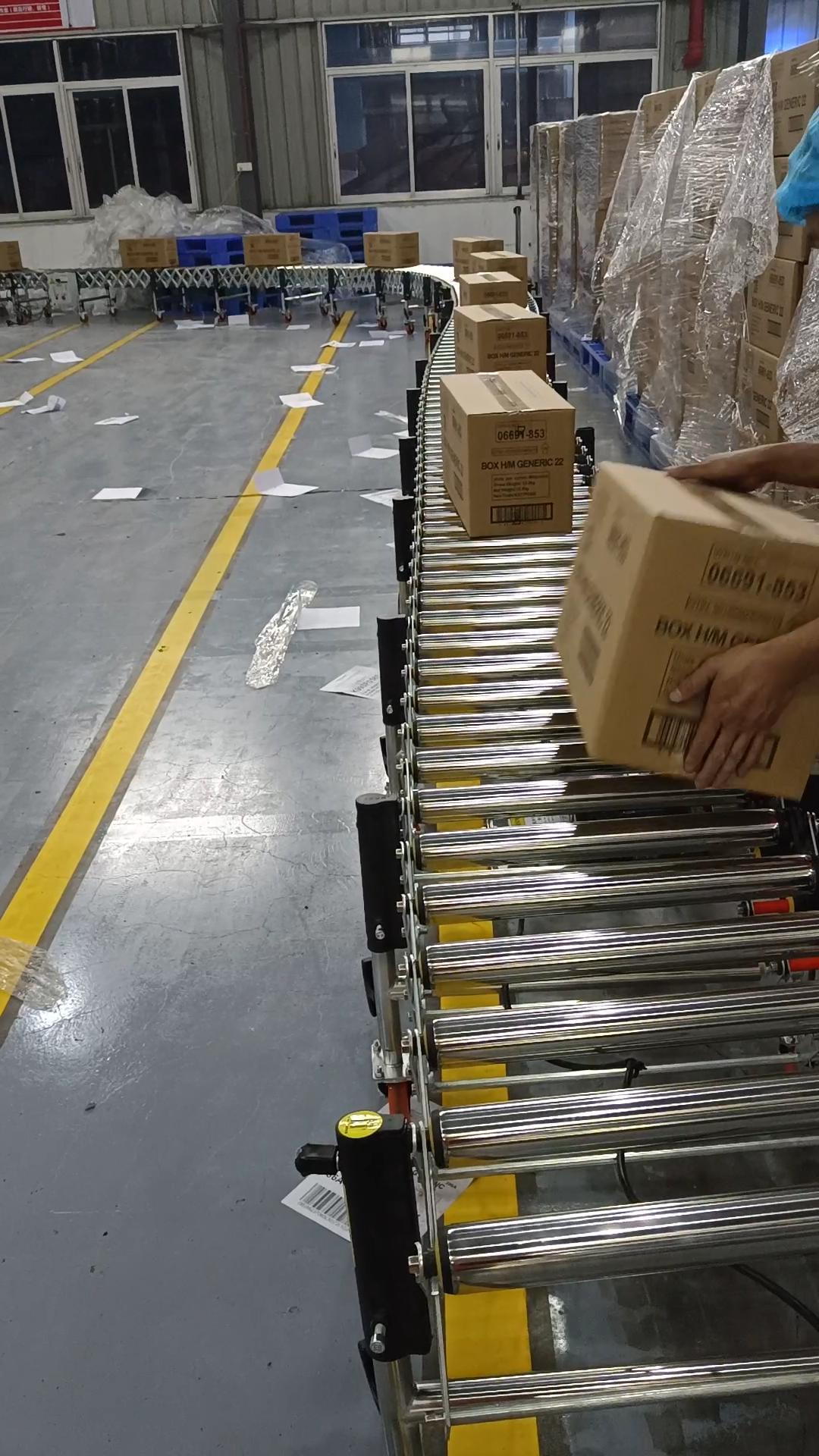

The system operates on these principles:
- A single belt can drive multiple rollers simultaneously
- The V-shaped ridges provide more surface contact and better grip
- Power transfers more efficiently through the system
- The design minimizes slippage even under heavier loads
- Multiple ridges distribute force across a wider area
Naili implements this system in both their 2000mm and 3000mm section models, with 14/13 and 10/9 rollers in the fixed/extendable sections respectively, set at 100mm intervals.
Pros of Multi-Wedge Belt (Poly-V) Drive
The Multi-Wedge Belt system offers significant performance advantages:
- Higher load capacity: Up to 100 kg/m in Naili’s 2000mm model
- Better grip and power transfer: Reduced slippage even under heavy loads
- More durable: Longer belt life in most applications
- Greater efficiency: Less energy loss between rollers
- More consistent speed: Maintains speed better under varying loads
- Lower maintenance frequency: Generally requires less frequent belt replacement
- Superior heavy-duty performance: Ideal for intensive operations
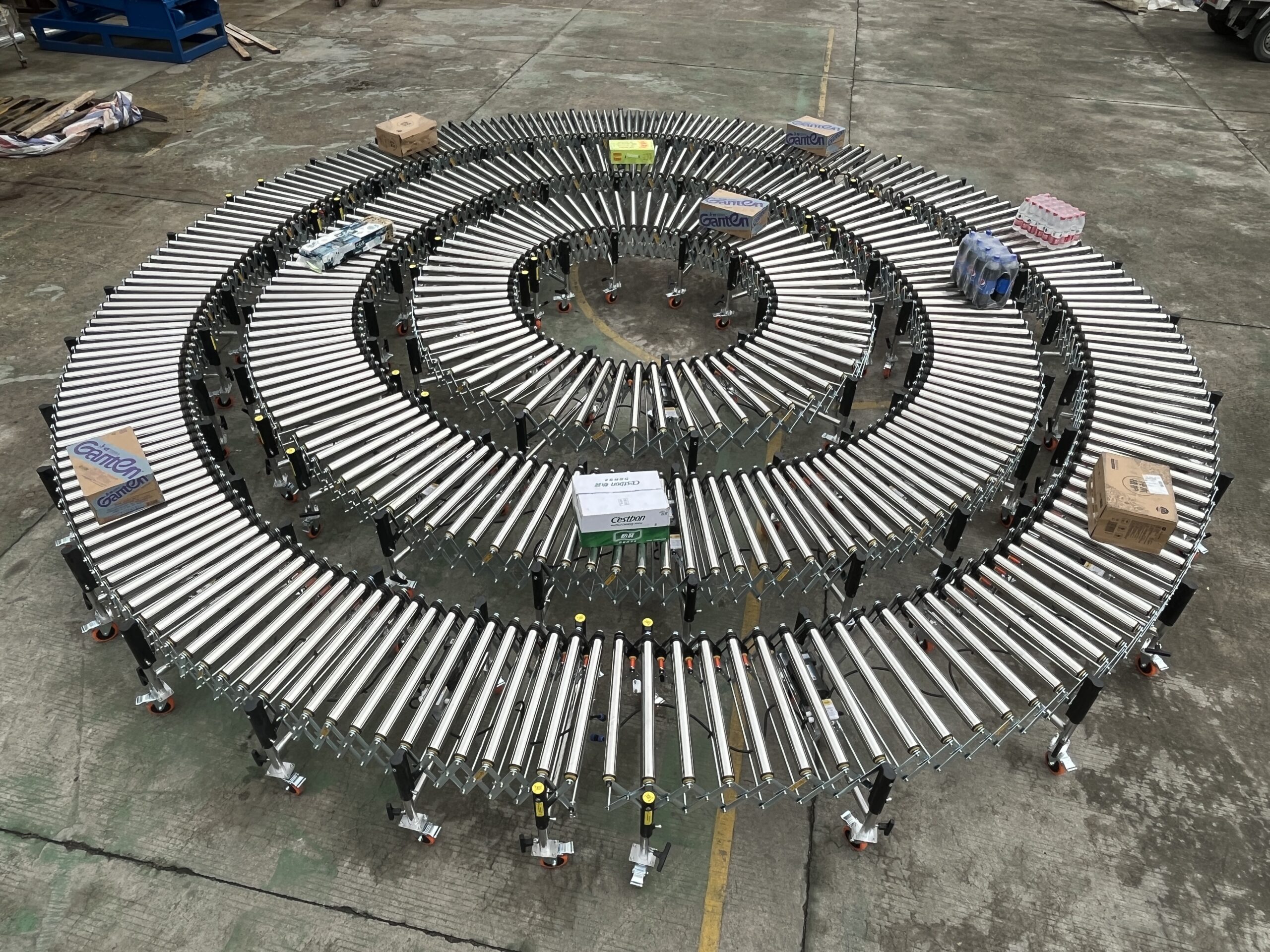

Cons of Multi-Wedge Belt (Poly-V) Drive
The superior performance of Multi-Wedge systems comes with certain trade-offs:
- Higher initial cost: More complex manufacturing and materials
- More complex maintenance: Belt replacement can require more disassembly
- Heavier components: Slightly more challenging installation and handling
- Less flexibility for curved sections: Better suited for straight runs
- Higher replacement part cost: When maintenance is required
- More specialized repair knowledge: May require more technical expertise
Naili’s Powered Roller Conveyor Lineup
Naili offers three distinct powered roller conveyor models, each optimized for different operational requirements:
Comparing the specs of our O-Belt and Multi-Wedge models
| Feature | O-Belt Drive 1500mm/Section | Multi-Wedge Belt 2000mm/Section | Multi-Wedge Belt 3000mm/Section |
| Collapsed Length | 525 mm | 700 mm | 1050 mm |
| Extended Length | 1500 mm | 2000 mm | 3000 mm |
| Extension Ratio | 1:3 | 2:3 | 1:3 |
| Speed Range | 0-40 m/min | 0-40 m/min | 0-40 m/min |
| Load Capacity | 80 kg/m | 100 kg/m | 80 kg/m |
| Available Widths | 500/600/800 mm | 500/600/800 mm | 500/600/800 mm |
| Roller Diameter | 50 mm | 50 mm | 50 mm |
| Reducer | 120 W | 120 W | 120 W |
| Inverter Options | 0.75/1.5/2.2 kW | 0.75/1.5/2.2 kW | 0.75/1.5/2.2 kW |
| Frame Warranty | 12 months | 12 months | 12 months |
| Belt Warranty | 6 months | 6 months | 6 months |
| Weight (600mm width) | 36 kg/section | Not specified | 70 kg/section |
All Naili powered conveyor models include height-adjustable legs with options ranging from 450-680mm to 900-1500mm, making them adaptable to various operational heights. Each unit is equipped with 4-inch casters (30mm wide, 120mm high) with full braking capability for mobility when needed and stability during operation.
Load capacity (80kg/m vs 100kg/m)
The most significant practical difference between Naili’s conveyor models lies in their load capacity:
O-Belt Drive (1500mm) and Multi-Wedge Belt (3000mm):
- Maximum capacity of 80 kg per linear meter
- Ideal for standard cardboard boxes, small packages, and medium-weight products
- Suitable for e-commerce, retail distribution, and general logistics applications
- Cost-effective solution for operations primarily handling items under 60kg
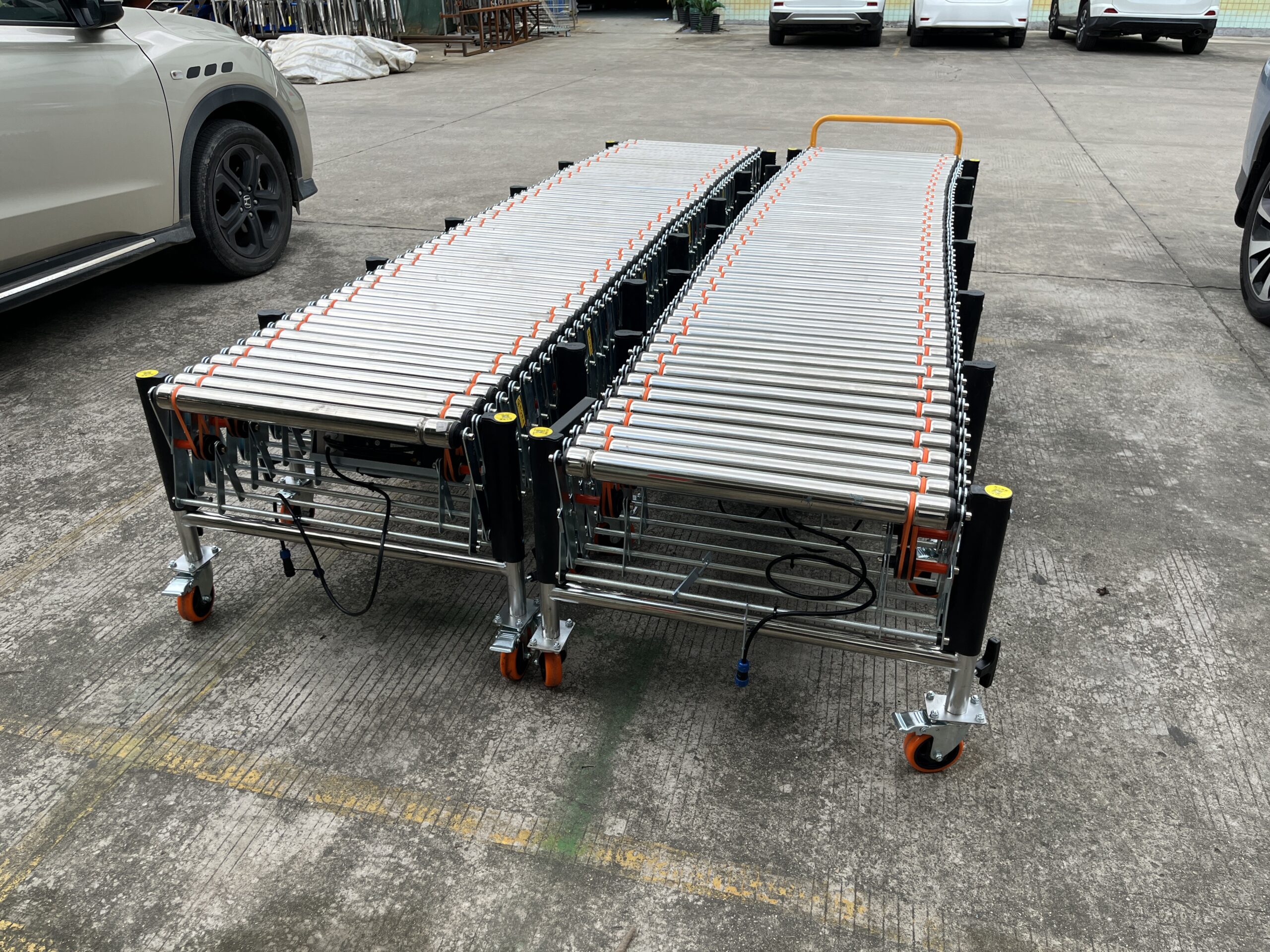

Multi-Wedge Belt (2000mm):
- Enhanced capacity of 100 kg per linear meter
- Optimal for heavier boxed goods, industrial components, and bulkier products
- Perfect for manufacturing logistics, heavy retail items, and industrial distribution
- Recommended for operations regularly handling items approaching or exceeding 60kg
This load capacity difference is critical for operations where product weight varies or when planning future expansions that might involve heavier items.
Installation and Maintenance Tips
Proper installation and maintenance are crucial for maximizing the lifespan and performance of your powered roller conveyor system. Following these best practices will ensure optimal operation and minimize downtime.
How to connect multiple sections
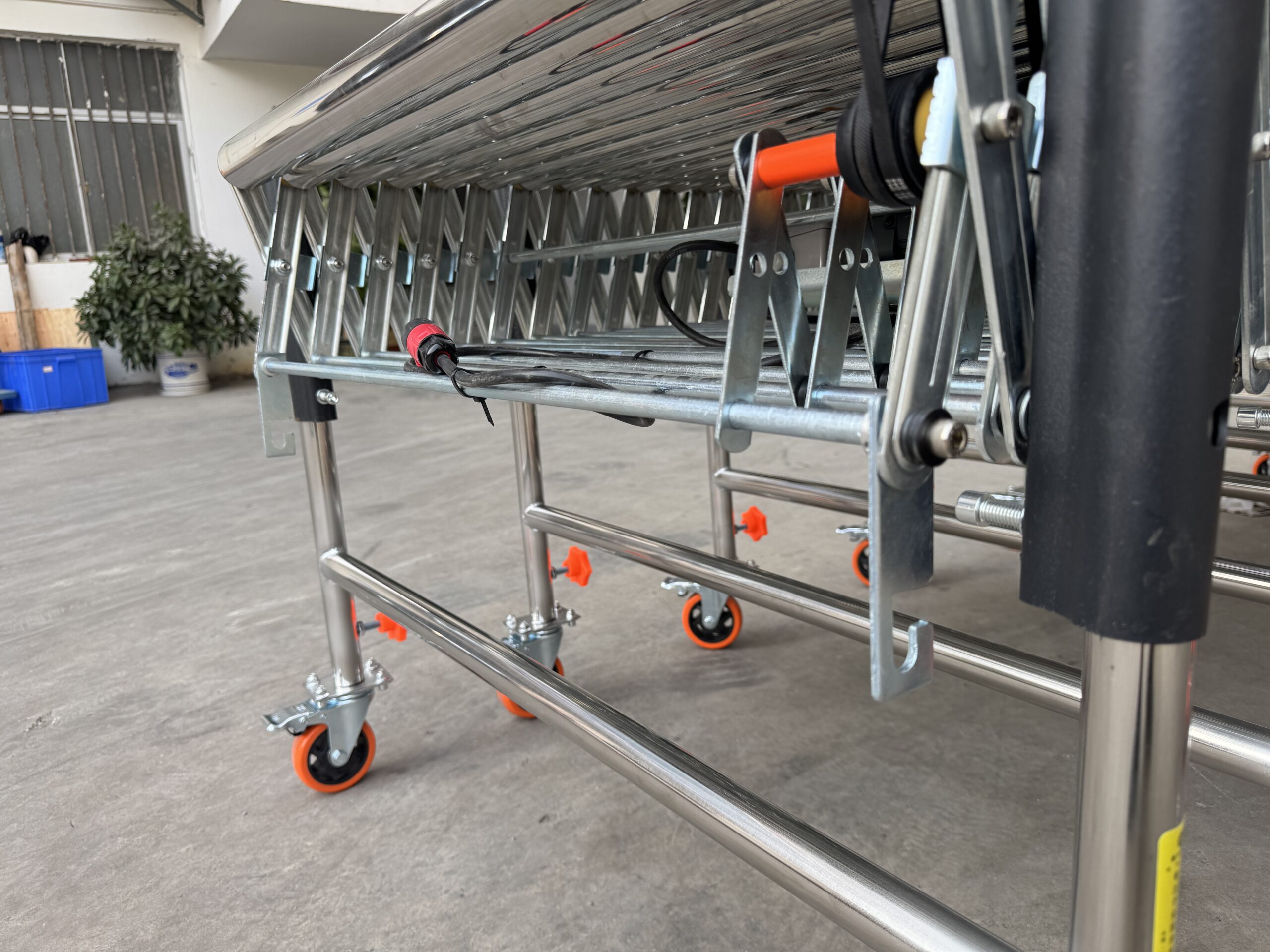

One of the greatest advantages of Naili’s powered roller conveyors is their modularity. Multiple sections can be connected to create custom-length conveyor lines:
- Align the sections: Position the sections end-to-end on a level surface, ensuring proper alignment
- Connect the frames: Use the provided connector brackets to join the section frames securely
- Adjust heights: Ensure consistent height across all sections using the adjustable legs
- Electrical connections: Connect the additional sections to the main control box using the provided wiring harnesses
- Test the connections: Before full operation, test each section individually and then as a complete system
- Balance the load: For optimal performance, distribute heavy loads evenly across multiple sections
For complex layouts involving curves or transfers, consult with Naili’s technical team for specialized connection hardware and configuration advice.
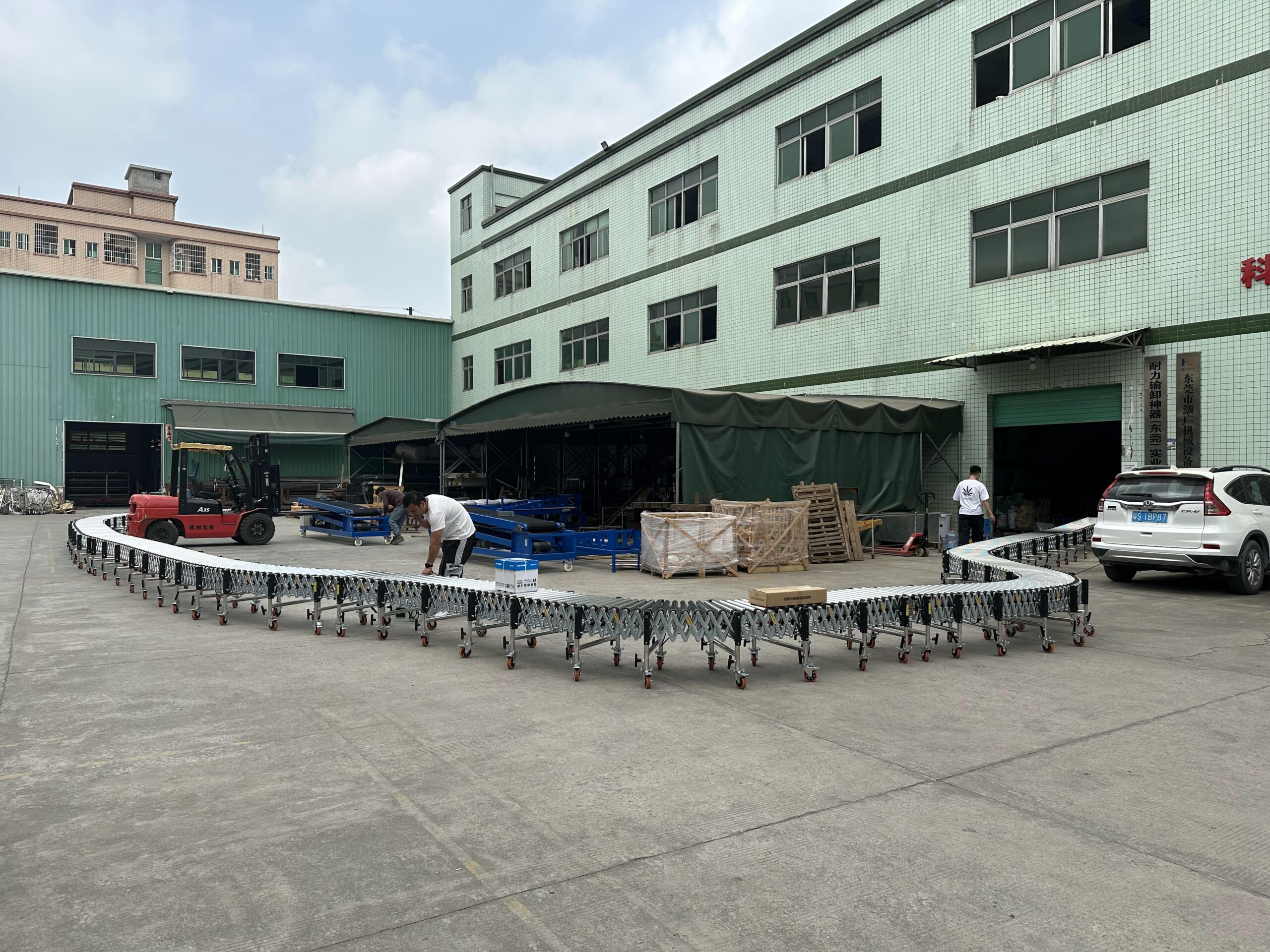

Common maintenance issues to watch for
Regular inspection and preventive maintenance can significantly extend the life of your powered roller conveyor. Here are the most important issues to monitor:
Belt tension and wear:
- Check belt tension monthly—belts should have slight give but not be loose
- Inspect for fraying, cracking, or stretching
- Replace belts at the first sign of significant wear to prevent unexpected failures
- Pay special attention to areas where belts frequently contact rollers
Drive system issues:
- A key maintenance concern is product jamming. When goods become stuck between rollers, operators must immediately stop the system
- Forcing jammed products through can cause belt damage as the rollers continue to rotate against a stationary belt
- This friction quickly wears through drive belts, leading to premature failure
- Train operators to clear jams properly by stopping the system and manually removing obstructions
Roller maintenance:
- Inspect rollers regularly for free rotation
- Clean accumulated debris or material from roller surfaces
- Check for bent or damaged rollers that may cause belt misalignment
- Verify roller bearings are properly lubricated quarterly
Electrical system care:
- Inspect all wiring connections quarterly for signs of wear or loosening
- Keep control boxes clean and protected from moisture
- Verify emergency stop functionality before each shift
- Don’t modify frequency converter parameters, as this may render equipment inoperable
With proper maintenance, Naili’s powered roller conveyors typically deliver 5-10+ years of reliable service. The most frequent replacement item is the drive belt, which with proper care should last 1-2 years in standard operations before requiring replacement. Get more information about the maintenance of roller conveyors.
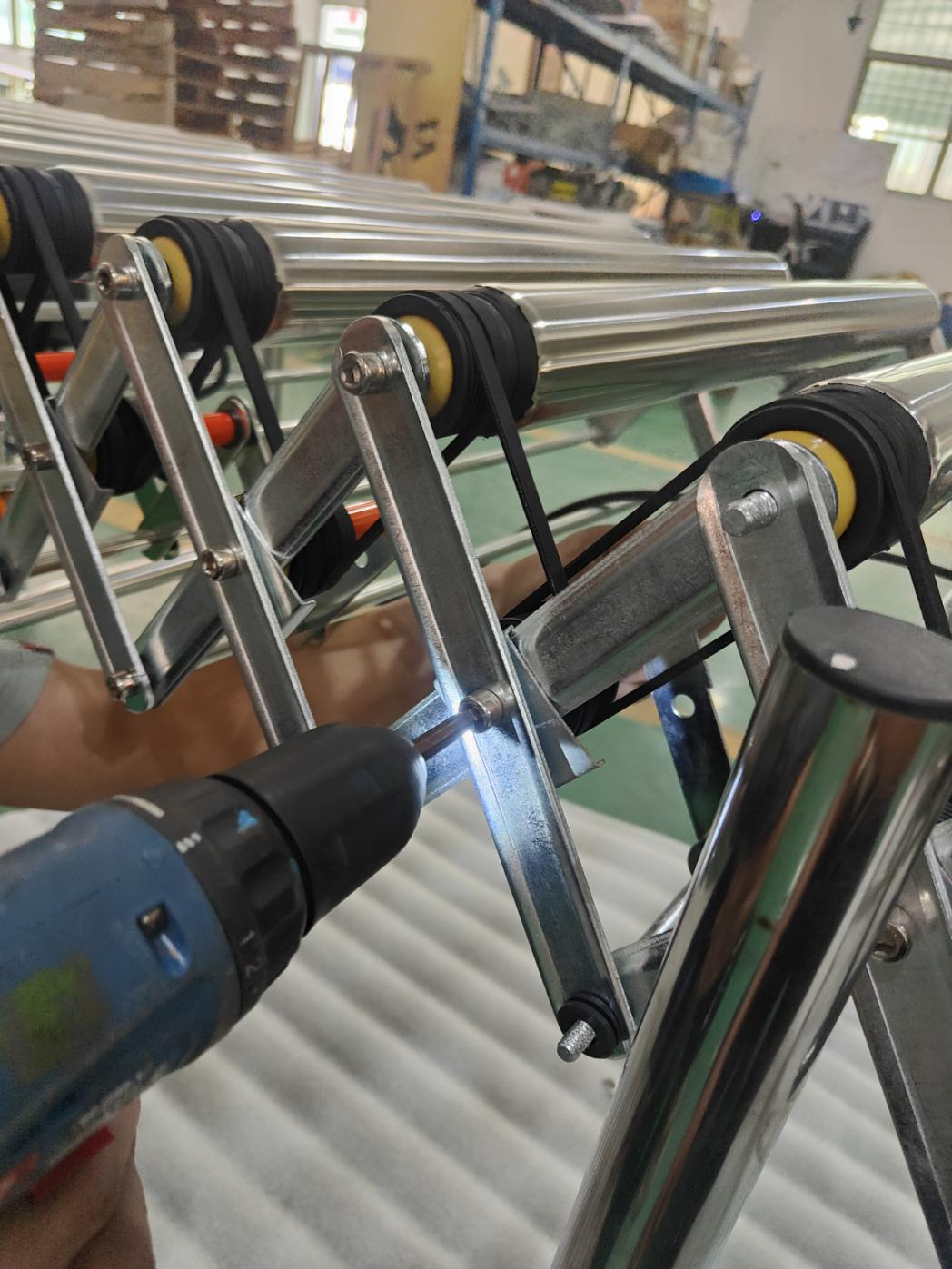

Powering Your Productivity with the Right Roller Conveyor
Selecting the optimal powered roller conveyor for your operation requires balancing several factors including load requirements, space constraints, maintenance capabilities, and budget considerations. Naili’s diverse lineup of O-Belt and Multi-Wedge Belt systems provides solutions tailored to various operational profiles.
For operations primarily handling standard packages and seeking cost-effective solutions, the O-Belt drive system offers an excellent entry point with its lower initial investment and simplified maintenance. Its 1500mm sections provide good flexibility in space-constrained environments while still delivering reliable 80kg/m capacity.
For operations regularly moving heavier items or requiring maximum durability, the Multi-Wedge Belt system delivers superior performance. The 2000mm model’s enhanced 100kg/m capacity makes it ideal for heavier applications, while the 3000mm model offers maximum extension in each section for efficient use of drive components.
Regardless of which system you select, powered roller conveyors represent a strategic investment in operational efficiency. By eliminating manual horizontal transport, standardizing throughput rates, and creating consistent product flow, these systems transform warehouse productivity while reducing physical strain on workers.
With proper installation, regular maintenance, and appropriate application, your motorized roller conveyor system will serve as the backbone of efficient materials handling for years to come—streamlining operations and supporting growth as your business evolves.
Frequently Asked Questions
How do I determine whether I need an O-Belt or Multi-Wedge Belt system for my operation?
Consider your typical load weight, operational intensity, and maintenance capacity. If you primarily handle standard packages under 60kg, the more economical O-Belt system (1500mm sections) may be sufficient. For heavier items, high-volume operations, or applications where maximum uptime is critical, the Multi-Wedge Belt system (particularly the 2000mm model with 100kg/m capacity) offers superior durability and performance.
What is the expected lifespan of the drive belts in powered roller conveyors?
Under normal operating conditions with proper maintenance, O-Belt drive belts typically last 6-12 months before requiring inspection or replacement. Multi-Wedge Belts generally last 12-24 months in similar conditions. However, these timeframes can vary significantly based on usage intensity, load weights, operating environment, and maintenance practices. Naili offers a 6-month warranty on all drive belts.
Can powered roller conveyors be used outdoors or in wet environments?
Naili’s standard powered roller conveyors are designed for indoor use in dry environments. Exposure to moisture can cause electrical hazards and accelerate component deterioration. For damp environments or occasional outdoor use, special weather protection and electrical isolation measures are required. Never leave the equipment exposed to direct rainfall or standing water.
How much power do powered roller conveyors require?
Naili’s powered roller conveyor systems operate on standard 220V or 380V power (three-phase 380V is recommended for optimal performance). Each section uses a 120W reducer, while the variable frequency drive ranges from 0.75kW to 2.2kW depending on system length. For specific power requirements and recommendations for your configuration, consult with Naili’s technical team during the specification process.
How quickly can I install and start using a powered roller conveyor system?
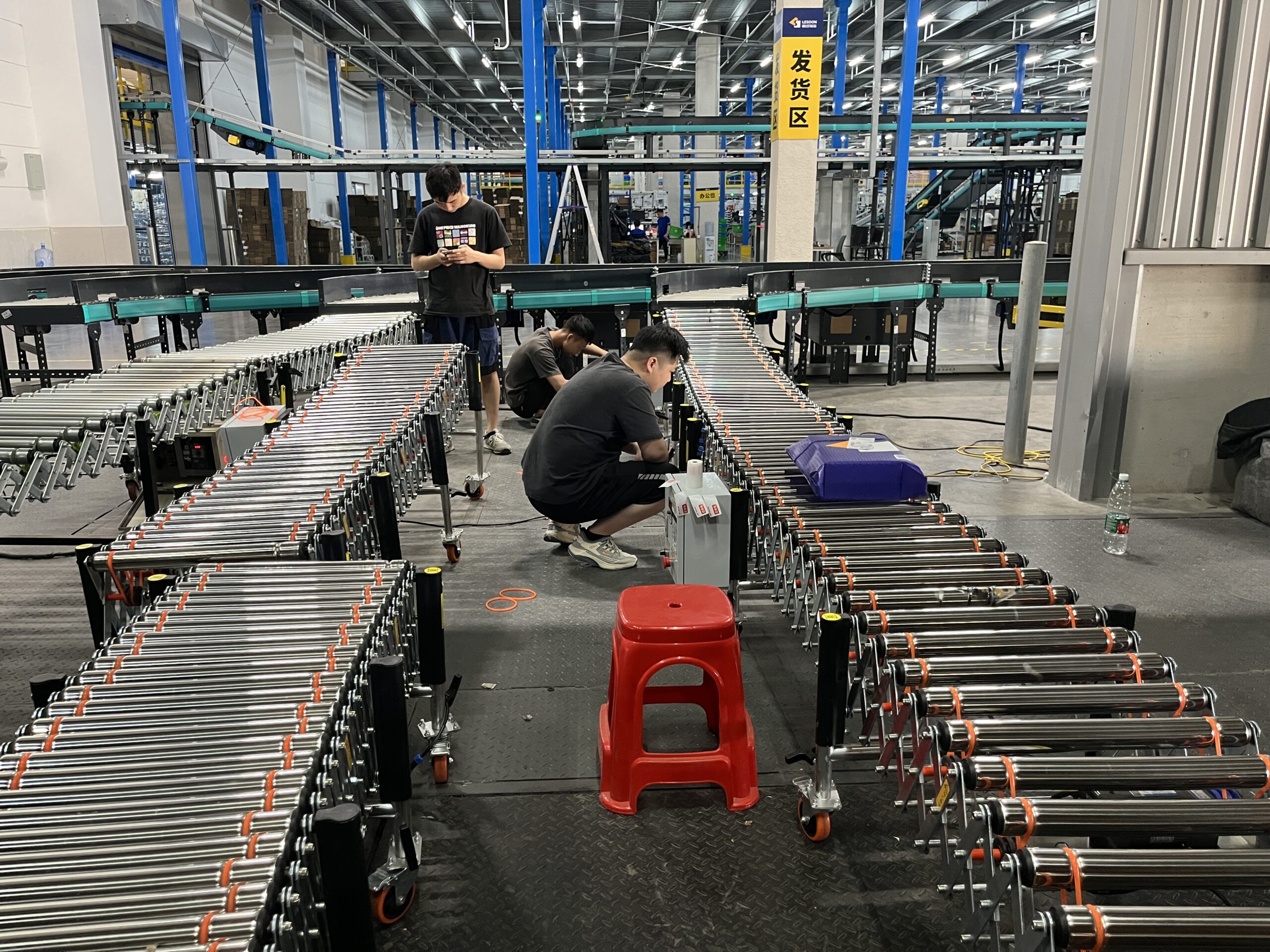

Table of Contents
Recent Posts
Optimize hardware store logistics with the right building supply conveyor systems. Our guide to tool distribution systems enhances retail warehouse automation for efficient operations.
Optimize your medical supply logistics with efficient gravity conveyor systems. Learn how to safely handle healthcare products while improving your hospital supply chain operations.
Discover how a sports equipment conveyor system can streamline your athletic gear logistics. Flexible conveyor solutions for all shapes and sizes of sporting goods.

